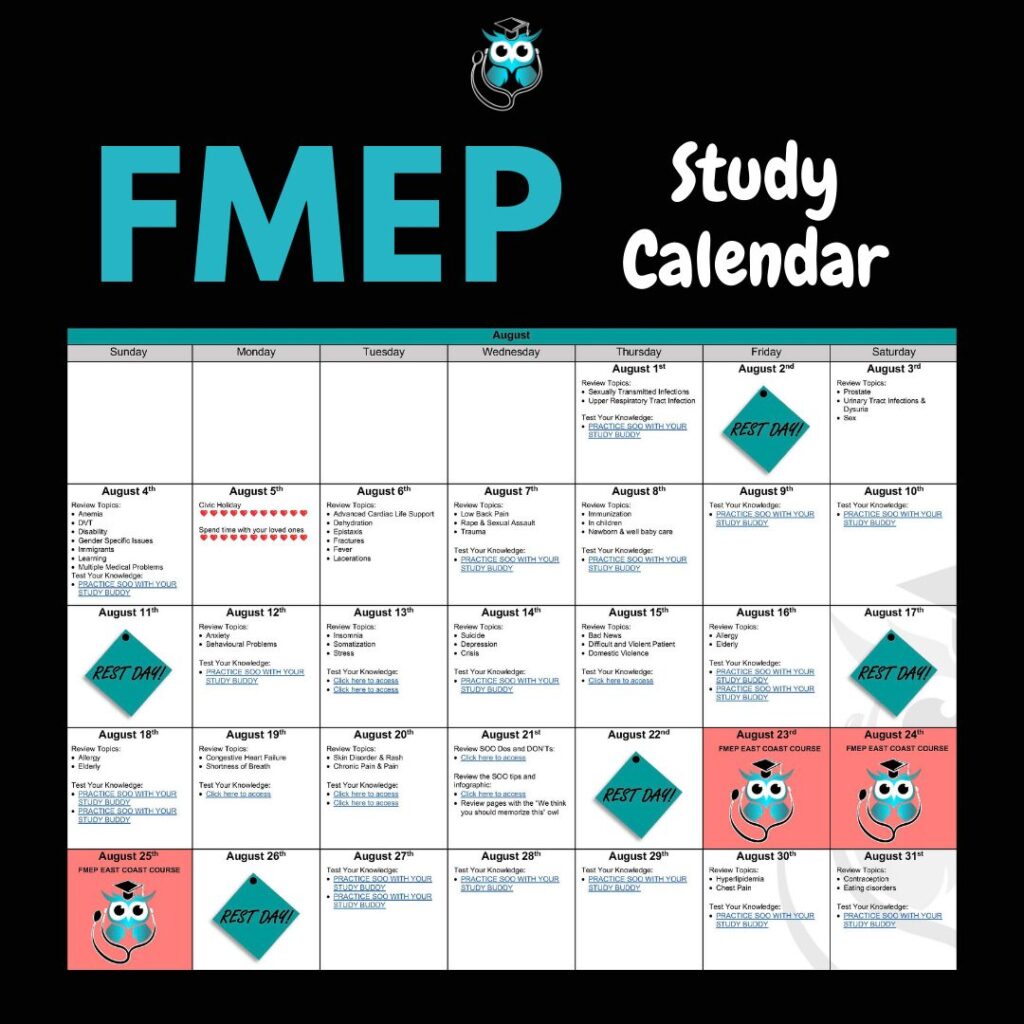
Just a few quick tips first…
- Pay attention to the questions. Look carefully at how many items you are being asked to list. If the question asks for five items, you will not get more marks if you list eight items; the examiner will look at the first five and allocate marks only for the first five answers – so be careful. On a SAMP, if it is not clearly stated how many items you should list, look at the amount of points/marks being allocated for the question to get an idea of how many answers the examiner may be anticipating you write down.
- Do not write lengthy answers. Most questions can be answered in 10 words or less!
- Be specific when writing down investigations (hemoglobin instead of CBC; CT abdomen instead of CT).
- Remember that trade names and generic names are both acceptable when writing down medications.
- For more helpful tips, you can refer to CCFP’s SAMP instructions by clicking here.
SAMP
Mr. Stat In is a 41-year-old male who comes in for his periodic health check-up. He tells you his father had a heart attack when he was 61. He admits to drinking one to two alcoholic beverages on weekends and smoking socially (two to three cigarettes per week). He is physically active and engages in regular ballet dancing. His height is 180 cm, and his weight is 92 kg. He works as an accountant but travels regularly to India to visit his father. You review his blood work from last month, and his HbA1c was 6.1%. His blood pressure today is 152/82.
1. For Mr. Stat In, what are four indications for lipid screening? (4 points)
- Age
- Cigarette smoking
- South East Asian ethnicity
- Hypertension
NOT obesity (BMI < 30), NOT family history of early CAD (men < 55 and women < 65 years of age in 1st degree relatives), not pre-diabetes. Check out the screening guidelines here [https://www.onlinecjc.ca/article/S0828-282X(16)30732-2/fulltext].
2. List two laboratory tests you would order to screen Mr. Stat In for dyslipidemia. (2 points)
- Total cholesterol
- LDL-C
- HDL-C
- TG
- Non-HDL-C
NOT “cholesterolâ€- be SPECIFIC!
3. He completes his non-fasting blood work, and his triglycerides come back at 4.8. What is your next step? (1 point)
- Repeat blood work after Mr Stat In has fasted
4. He repeats the blood work in a fasting state and then follows up with you. You review the results and note that his LDL is 4.6, HDL 1.2, non-HDL 6.1, and TG 4.5. You are considering your management options. List one tool you can use to assess his cardiovascular risk. (1 point)
- Framingham Risk ScoreÂ
- Cardiovascular Life Expectancy Model
5. You initiate statin therapy. List four statin-associated side effects. (4 points)
- Elevated transaminase levelsÂ
- Myalgia
- Myopathy
- Rhabdomyolysis
- Cataracts
- Type 2 diabetesÂ
6. What LDL level are you targeting with your therapy? (1 point)
- LDL < 2.0 or > 50% reduction
Note: If the patient had ACS, LDL < 1.8 would be an acceptable answer.
7. You calculate his Framingham risk score to be 24%. List three non-statin therapies that can be used to manage dyslipidemia. (3 points)
- Fibrates
- Ezetimibe
- Bile acid sequestrants
- PCSK9 inhibitors
- Niacin (may or may not be right, as CCS and CFP state that evidence is limited)
8. What are two statin-indicated conditions? (2 points)
- Clinical atherosclerosis
- Myocardial infarction, acute coronary syndromes, stable angina, documented coronary disease by angiography, stroke, TIA, documented carotid disease, peripheral artery disease, claudication, and/or ABI < 0.9
- Abdominal aortic aneurysm, abdominal aorta > 3.0 cm, or previous aneurysm surgery
- Diabetes mellitusÂ
- ≥ 40 years of age or > 15 years duration and age ≥ 30 years of age or microvascular complications
- LDL-C ≥ 5.0 mmol/LÂ
- LDL-C ≥ 5.0 mmol/L or documented familial hypercholesterolemia excluding secondary causes
- Chronic kidney disease
- > 3 months duration and ACR > 3.0 mg/mmol or eGFR < 60 mL/min/1.73m2 ≥ 50 years of age
- Clinical atherosclerosis
Â
Â





